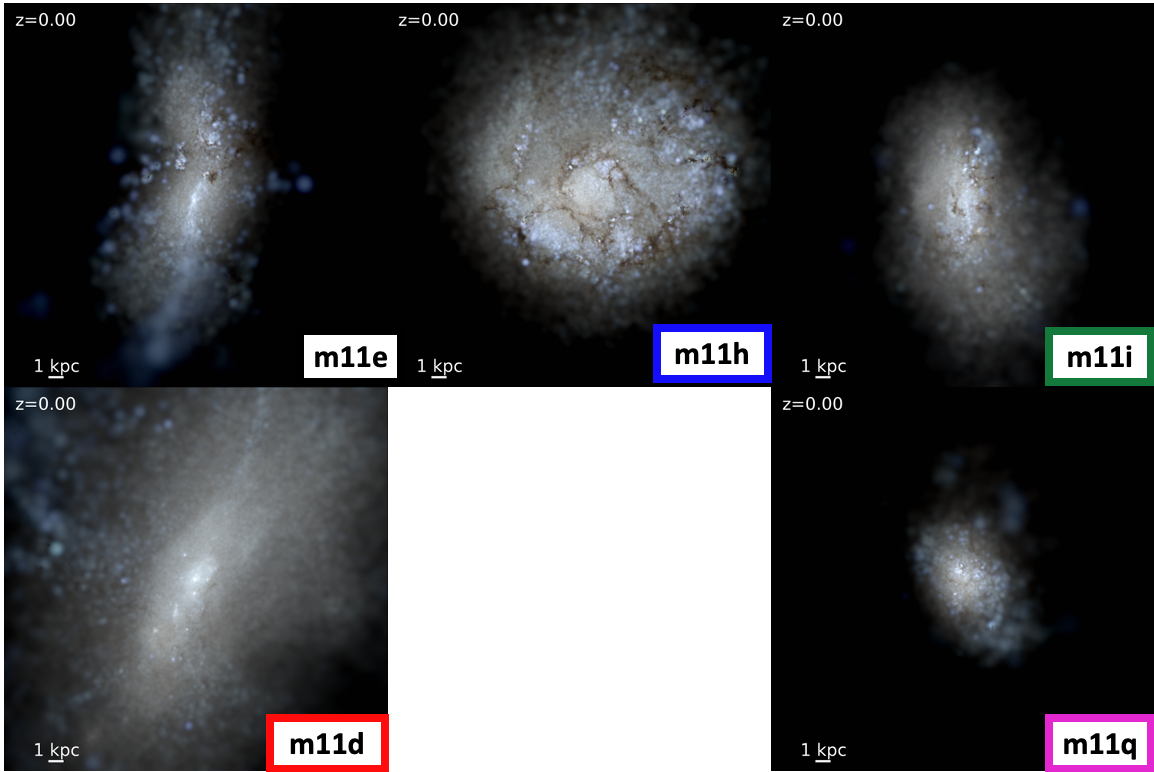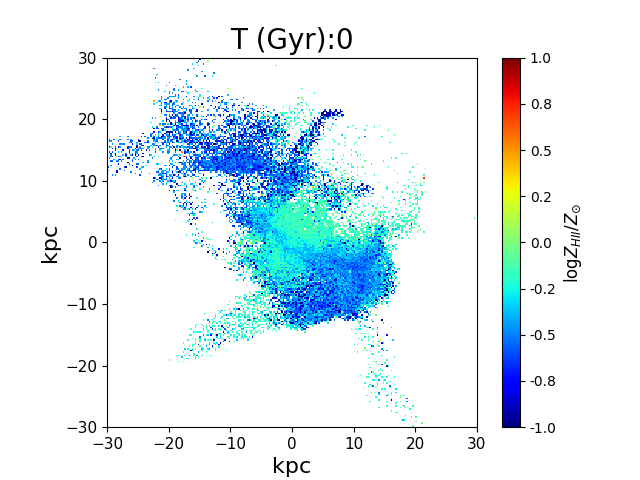
To keep up their star formation, galaxies must accrete cool gas from their surroundings. High-velocity clouds (HVCs) may be be a source of fuel for future star formation in out Milky Way, but this is only possible if the cloud survives its journey to the galaxy through the halo. This paper is one of the first comparisons of high-resolution observations of an HVC, the Smith Cloud, to simulations motivated by observational properties of the HVC. See the pre-print here.
The outflowing gas of a galaxy, especially that caused by supernovae, can have a significant impact on a galaxy's evolution, especially at cosmic noon. See this paper, which investigated such outlflowing gas and bubble morphologies, here.
This scientific venture took place in New York City at the Flatiron Institute's Center for Computational Astrophysics. Working under the guidance of postdoc Dr. Matt Orr and associate research scientist Dr. Blakesley Burkhart , I delved into the FIRE-2 simulations to study metallicity relations in dwarf galaxies. Thanks to their low mass, dwarf galaxies are particularly susceptible to feedback mechanisms, and they are the most common type of galaxy in the universe, forming the base of the hierarchial structure of galaxy formation and evolution. This makes them fantastic models for feedback and metallicity enrichment. Mock hubble images for each galaxy studied are on the right. View the completed publication here.


In particular, I studied galaxies m11d, m11e, m11h, m11i, and m11q. I mapped metallicity distributions , plotted their mass-metallicity relation (MZR) and metallicity gradients, and compared findings to existing observations at a similar mass and redshift range. We even got to catch a merger's metallicity enrichment in progress for galaxy m11e, seen in the gif on the left.
I presented this work at the 240th meeting of the American Astronomical Society in Pasadena, California, and the 2022 Kentucky Area Astronomical Society meeting at Austin Peay University in Tennessee. View the completed publication here.
My first true independent undergraduate research project (under Dr. Benne Holwerda at the University of Louisville), this study focuses on void galaxies. Voids, one of the primary components of the large-scale structure (LSS) of the universe, are not entirely empty! Instead, they exist as extremely underdense regions of the universe, and the few galaxies that reside inside them are expected to be among the most isolated objects in the universe. Because of this, they're expected to be excellent models of secular evolution (galactic evolution with minimal environmental influence).
Do void galaxies have a typical morphology? How does it compare to what we consider "normal" galaxies? Do underdense environments affect galaxy morphology in a significant way? By combining observational data from the Galaxy And Mass Assembly survey (GAMA) with citizen science from GalaxyZoo for the first time in this niche, this study builds a sample size of void galaxies several times larger than previous literature, and attempts to build upon existing theories and observational data to form more concrete answers to these questions.
This project served as the topic of my undergraduate honors thesis, which was successfully defended in October 2022.
Check out the paper (here).
Astrobites and The Daily Beast featured this research! Read their posts (here) and (here).


This project with Dr. Thomas Pannuti at Morehead State University's Space Science Center was my first introduction into academic research. While this was less independent research and more learning software and astronomy, this was where I gained my first experiences in making research presentations, communicating science, and how to conduct research. This was the experience that solidified my path to becoming a researcher.

Here, I learned how to study supernova remnants (SNRs) at various wavelengths, focusing on three in particular: G32.4+0.1, G5.9+3.1, and G359.1-0.5. We primarily focused on archival X-ray observations with the XMM-Newton Observatory. G32 and G359 are particularly interesting because they seem to differ from most SNRs. where most SNRS produce X-ray emission via the thermal bremsstrahlung process, the X-ray emission from G32 appears to instead be synchrotron radiation from cosmic-ray electrons accelerated by the SNR. In addition, typical X-ray morphologies of galactic SNRs are shell-like, but G359 is center-filled.
See the paper on G5.9+3.1 here.